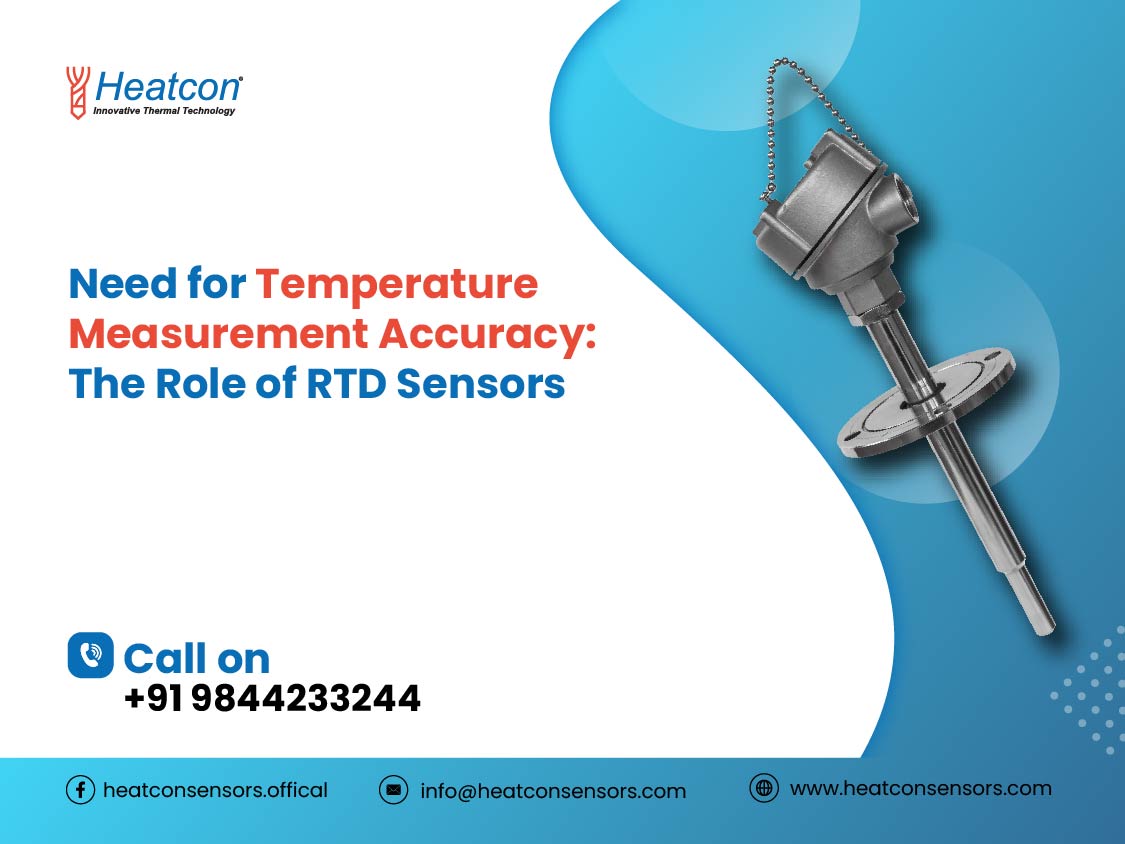Temperature measurement is quite a critical aspect across a gamut of industries, ranging from pharmaceuticals to food production, where precise control & monitoring are paramount for safety, quality, and efficiency. Among the myriad temperature sensing technologies available, resistance temperature detectors (RTDs) stand out for their stability, reliability, and accuracy. Let us delve into the significance of temperature measurement accuracy, especially focusing on the indispensable role played by these RTD sensors in achieving precise temperature monitoring.
The Importance of Temperature Measurement Accuracy
Accurate temperature measurement is indispensable across diverse industrial segments such as healthcare, manufacturing, and research labs, etc. In pharmaceutical manufacturing, for instance, even slight temperature variations during drug synthesis/storage can compromise product quality or render them ineffective. Similarly, in the food processing industry, precise temperature control tends to ensure product safety & compliance with regulatory standards.
Let’s Look at Some Statistics
As per a study done by Research Nester, the global temperature sensors market was valued at USD 6.19 billion in the year 2020 and is now projected to reach USD 8.53 billion by the year 2028, with a CAGR of 4.2 percent from the year 2021 to the year 2028. This growth is indicative of the amplifying demand for accurate temperature monitoring solutions across various industries worldwide. (Source: Retrieved from https://www.researchnester.com/reports/temperature-sensor-market/4935)
Understanding RTD Sensors
An RTD sensor tends to operate on the principle of resistance change of metals with temperature variation(s). Herein, platinum is the most commonly used material due to its high stability & linearity. The resistance of RTD sensors tends to increase linearly with temperature, thus enabling precise temperature measurements. One of the primary benefits of using RTD sensors is their exceptional accuracy, typically ranging from ±0.1°C to ±1°C, depending upon the factors including sensor design, calibration, & environmental conditions. This level of accuracy is significant in applications where precise temperature control is much needed, like in HVAC systems, and industrial & scientific research processes, etc.
Industry Standards & Specifications
RTD sensors adhere to stringent industry standards & specifications to ensure reliability & accuracy. The International-Electrotechnical-Commission (IEC) has standardized the performance characteristics of these RTD sensors in the IEC 60751 standard, stating the nominal resistance-temperature relationship, tolerance classes, and temperature coefficients. For example, a Class-A RTD sensor shall conform to the strictest tolerances, providing accuracy within ±0.15°C or better over the specified temperature range. These RTDs are ideal for applications requiring high precision, such as lab equipment & medical devices.
Challenges & Solution
Despite their supreme accuracy, an RTD sensor tends to face challenges including lead wire resistance & self-heating effects; these can introduce temperature measurement errors. To mitigate such challenges, manufacturers tend to employ techniques such as 4-wire sensing for compensating lead wire resistance and minimizing self-heating effects. Moreover, advancements in sensor design, signal conditioning, and calibration techniques continue to improve the accuracy & stability of RTDs, ensuring reliable temperature measurement across a vast array of industrial applications.
Conclusion
Temperature measurement accuracy is literally indispensable across a myriad of industries where precise control & monitoring is much needed. RTDs, with their exceptional accuracy, stability, and adherence to industry standards, tend to play a pivotal role in achieving this precise temperature measurement. As the demand for accurate temperature monitoring solutions continues to rise, these RTD sensors remain at the forefront, giving out reliable performance and ensuring product quality, safety, and regulatory compliance.
In conclusion, understanding the nuances of temperature measurement accuracy and the significant role of RTD sensors underscores their usefulness in modern industrial processes & scientific research endeavours. Route your search for the best products towards Heatcon Sensors, the range won’t let you down, for sure!


